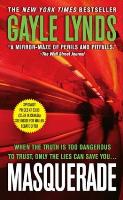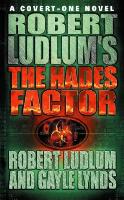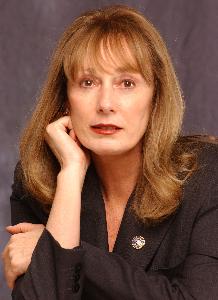Ali: | Welcome to Shots ezine! |
Gayle: | Thanks, Ali. What a warm introduction. |
Ali: | First we must congratulate on the great reviews that you have received for your latest book The Coil. Did you realise that it would gain so much acclaim from your contemporaries? |
Gayle: | Heavens, no. I was simply relieved to have survived writing it. I’d spent eight years researching and making notes, and then another two years writing and rewriting. I thought the book was good. How good was something else. At that point, one crosses one’s fingers and picks up bird’s feathers. The response has been more than gratifying. |
Ali: | Looking back over your early career, I read that you were a journalist in Arizona, and worked as an editor at Santa Barbara magazine, and got involved in real world politics with a GE ‘think-tank’. Somehow Kurt Vonnegut was involved. Tell us about that period and what journalism brought to your writing style. |
Gayle: | In the end, journalism was the bridge I needed into fiction. My first job after college was at The Arizona Republic in Phoenix, the largest newspaper in the state, where I was a general-assignment reporter. It was extraordinary training for a would-be novelist, although at that point I was still not admitting even to myself my hunger to write fiction. I covered everything from state and city government to criminal trials, political campaigns, movie stars, and education.
As I gained confidence and expertise in research and writing, I also began to see that my love for those parts of the work was never going to offset my qualms at powering through people’s pain or using that pain. But one must get the story, whatever it takes, short of violating the law. Particularly difficult for me was to question intensively the families and friends of those who were killed or injured or had committed a criminal act. Their emotions were raw, and most desperately needed privacy to sort through their confusion and to grieve.
Oddly, perhaps because I’m something of an A-type personality, I was good at it. I did a lengthy investigation into state support for mentally handicapped adults that led to new, more equitable legislation. I was inordinately proud of the series. Still, by the time my first husband and I moved to Santa Barbara, California, I was resigned to the fact that I simply didn’t have the stomach to be the great American journalist. Consequently, I never applied for work at another newspaper.
But what was I to do next? While studying for my degree in journalism at the University of Iowa, I had taken some literature classes led by the quirky and brilliant Kurt Vonnegut - and you’re right about his influence on me. As most writers do, he had worked many jobs to support himself and his family. One was as an editor at a think tank, which he described as bristling with so many ideas that they seemed to bounce off the very walls. From that percolating petri dish came the genesis for his extraordinary novel, Cat’s Cradle.
At the time, I’d been intrigued. So in Santa Barbara, I took a job as an editor at a think tank, too. It was General Electric-TEMPO, where scientists and engineers worked on projects around the globe, servicing both private industry and military contracts, everything from making deserts bloom to creating armaments that could wipe life from entire continents.
 After being vetted by the FBI, I was given security clearance up to Top Secret and soon discovered Kurt was more than right - not only did ideas seem to bounce off the walls, so did the people. The place was exciting and surrealistic, fertile with secrecy, information, pocket protectors in neon colors, rotating sexual liaisons, imaginations running amok, and a sort of swaggering cockiness that at its best swung the doors to potential wide open.
After being vetted by the FBI, I was given security clearance up to Top Secret and soon discovered Kurt was more than right - not only did ideas seem to bounce off the walls, so did the people. The place was exciting and surrealistic, fertile with secrecy, information, pocket protectors in neon colors, rotating sexual liaisons, imaginations running amok, and a sort of swaggering cockiness that at its best swung the doors to potential wide open.
Best of all for me, I, too, found an idea for a novel: There were water-cooler rumors that the U.S. government was performing secret brain-washing experiments on unsuspecting citizens, looking for ways to control minds as another arrow in their Cold War quiver. Later I discovered the talk was true. Among other names, the black program was called MK-ULTRA, and although the government officially closed it in the 1970s, a source “suggested” it continued under different names and different leaders.
No one ever said the path of a writer was straight, and mine was certainly no exception. By the 1980s, I had learned to parse out a story quickly and cut like a surgeon to the facts. But I longed for more: I wanted to give readers the experience, too. At this point in my life, I’d written hard news, and I’d written and edited technical documents. If I were to stay in journalism, the next step was features, which was why I landed at Santa Barbara magazine, first as assistant editor then as editor-in-chief.
I took to magazine work instantly, at last finding a place where I could experiment with mood and setting and dialogue and description, using the techniques of New Journalism and some I invented on the spot. At the same time, my idea of what words were had changed. I no longer viewed them as simply serviceable tools, but as alive: they could and should dance and sing and paint with vivid colors and emotion and thought. At last, I was beginning to give readers the occasional opportunity to live a story.
Please remember this evolving life was in the backwaters of Phoenix and Santa Barbara, hardly the beating heart of publishing or of literature, but I was where I was because of choices I had made, primarily to have children. I couldn’t abide the casual disregard of humans as disposable, which I’d seen too often in all professions and trades, including in the arts. Since I was now divorced, and my children needed the stability, which included Santa Barbara’s familiar circumstances, I was determined to make the most of what I could find there.
Another direction I took was writing short stories, but they turned out to be literary, which among other things meant I was paid in copies of the journals in which they were published. Since paper was not a food group, and my children had grown accustomed to eating, and since Santa Barbara magazine was not paying enough to support us, I wrote male pulp novels, too. This serendipity was due to my husband-to-be, Dennis Lynds, aka Michael Collins, who signed the contracts and created the outlines for two Nick Carter novels, which I then wrote. The Nick Carter series has been around for decades, written by many male authors, and is sometimes described as an American version of James Bond. After I’d finished the first two, I insisted I create the outlines for the next books in the contract. This was because I wanted to learn how to think the bones of a book.
 In the end, I wrote five Nick Carters, all of which had international settings and were based on international political intrigue. I know that sometimes people are shocked I would “lower” myself to pulp fiction, but I looked upon it as an exciting opportunity to grow and experiment as a writer. And, too, Dean Koontz and Martin Cruz Smith and Ross Macdonald and my husband and other fine authors had plowed those literary fields early in their careers. Why shouldn’t I? (The titles of the Nick Carters and the rest of my published work are available on my website, for anyone who wants the details of my checkered literary past: (www.GayleLynds.com).
In the end, I wrote five Nick Carters, all of which had international settings and were based on international political intrigue. I know that sometimes people are shocked I would “lower” myself to pulp fiction, but I looked upon it as an exciting opportunity to grow and experiment as a writer. And, too, Dean Koontz and Martin Cruz Smith and Ross Macdonald and my husband and other fine authors had plowed those literary fields early in their careers. Why shouldn’t I? (The titles of the Nick Carters and the rest of my published work are available on my website, for anyone who wants the details of my checkered literary past: (www.GayleLynds.com).
So there you have it, Ali - newspaper, think tank, magazine, literary short stories, and male pulp fiction. Everything I did added to my development as a novelist. But as you can see, I was reaching the point where I had nowhere else to go but into my own books. Thus, in the 1990s, I began my first spy thriller, Masquerade, which - thanks to the think tank - included a subplot about a CIA-sponsored brain-washing program. |
Ali: | A writer once told me that the most interesting people (writers or characters in novels) are the ones with some personal trauma that splintered their youth. Did you have any trauma or incident that perhaps helped mould you in some way? And if so would you be prepared to share that incident with us? |
Gayle: | Probably the most devastating event of my youth occurred when I was an adolescent, and the manner in which I learned of it was in the same way I learned much about life - from the written word. My younger sister had been going back and forth to doctors because she had an enlargement on the side of her neck, and none could make sense of it, despite painful exploratory surgery. She was a fragile six years old; I was a very grown-up twelve.
One afternoon, I arrived home from school to find my mother on the phone with our family doctor, crying - an unusual event - and trying to hide her tears. She said little, the phone dug into her ear, as she jotted a note to herself. Within minutes, my father showed up, having left work early - an even more unusual event - and they drove off.
As soon as I settled my sister with a book, I ran to the paper Mom had forgotten beside the phone. On it was only one word I didn’t know - “malignant”. Of course I instantly looked it up in our battered copy of Webster’s. That was how I discovered my little sister had terminal cancer. Ah, the incendiary power of a single word. Two years later, after a titanic struggle, she was dead. None in my family was ever the same. |
Ali: | That is a terrible tragedy. I am so sorry for your loss. |
Ali: | Have you always been an advocate of the thriller genre? |
Gayle: | I’ve always been an advocate of all genres, since my theory is that I’m not God, Yahweh, the Goddess, Allah, or whatever. From mainstream to science fiction, romance to mysteries, cartoons to comic books... I just want to see people reading. A book in the hand is far preferable to a gun.
Having said that, I became a vocal advocate of the spy thriller in the mid- 1990s, although it seemed as if everyone, including New York publishing, had declared it as dead as the Cold War. Even two of the genre’s masters, Frederick Forsyth and John le Carre, fled the field to pursue other novelistic interests. Similarly, the United States was so exhausted by decades of international nuclear detente that the public’s interest in foreign affairs evaporated.
Nevertheless, none of that stopped clandestine activities. In fact, they increased, because the planet was growing progressively perilous. As you probably know, espionage is called the second oldest profession, and anyone who reads my books, particularly my new one, The Coil, will see why. Spies and spying have always been with us, and I believed at the time and still believe that that isn’t going to go away. Because of all of this, contemporary spy thrillers were not only relevant but vital to write and publish in the 1990s, and if they were well-done and exciting, I knew readers would want them.
So in 1994, I finished Masquerade, and my agent set out to sell it, although the outlook was grim. On top of that, we ran into a completely unexpected roadblock: On the deadline day she was to decide whether she wanted the manuscript, the head of Dutton Books asked her assistant to phone my agent with apologies, that she was home with a cold but she’d call in the morning with an offer. As promised, she called, but it was to say that although she loved it, she couldn’t buy it, because “no woman could’ve written this novel.”
He was stunned; I was stunned. It was out-and-out sexism, of all the crazy responses. Yes, the field was dominated by men, but how could she have forgotten the renowned Helen MacInnes, “the queen of international espionage,” who had died only nine years before, in 1985, after a string of some twenty New York Times bestsellers? MacInnes’s storied career had lasted more than four decades, beginning in 1939 with the classic Above Suspicion and ending just a year before her death with the publication of Ride a Pale Horse.
Even if one were to ignore the public’s hunger for MacInnes’s work, this was a modern, enlightened era. How could any powerful publisher - male or female - at the top of the industry imagine only male authors could write compelling spy tales?
 After one’s shock wears off, one laughs. Lunacy knows no bounds, including in the book industry. To my agent’s everlasting credit, he never blinked; he sent the manuscript to Steve Rubin, president of Doubleday, who bought it without question. In 1996 when it was released in hardcover, Masquerade was named “Page-Turner of the Week” by People magazine, and it sold overseas to some twenty countries. When Berkley Books issued it in paperback in 1998, it became a New York Times bestseller.
After one’s shock wears off, one laughs. Lunacy knows no bounds, including in the book industry. To my agent’s everlasting credit, he never blinked; he sent the manuscript to Steve Rubin, president of Doubleday, who bought it without question. In 1996 when it was released in hardcover, Masquerade was named “Page-Turner of the Week” by People magazine, and it sold overseas to some twenty countries. When Berkley Books issued it in paperback in 1998, it became a New York Times bestseller.
Nevertheless, the spy thriller field was continuing to shrink; few new authors entered, while many established ones turned their talents to World War II and other sorts of historical thrillers. In this disheartening publishing atmosphere, I still wrote and published two more standalone spy thrillers - Mosaic and Mesmerized.
Then on 9/11/01, al-Qaeda units attacked the Twin Towers and the Pentagon, killing some 3,000 souls from many countries. In that one tragic day, the United States learned that the world beyond its borders not only mattered, it behoved us to pay very close attention. Abruptly, television, radio, newspapers, and magazines doubled and tripled their overseas coverage. My friends who were international journalists and had been unable to find work were back on the job. Intelligence operatives who had been retired were called back in for “consulting” work. And the spy thriller was viable again. |


 I was fortunate to attend a writing seminar which was opened by Gayle Lynds at Bouchercon 34 in Las Vegas last year. At the time I was only familiar with her name from her Covert-One books, but her insight into thriller writing provoked me to explore her other work urgently. During the course of the weekend I bumped into her at various events, and we talked about the history of thrillers - an obsession of mine.
When I returned to the UK I picked up her earlier novels Mosaic, Mesmerized and Masquerade, but nothing quite prepared me for her latest book -The Coil.
I was fortunate to attend a writing seminar which was opened by Gayle Lynds at Bouchercon 34 in Las Vegas last year. At the time I was only familiar with her name from her Covert-One books, but her insight into thriller writing provoked me to explore her other work urgently. During the course of the weekend I bumped into her at various events, and we talked about the history of thrillers - an obsession of mine.
When I returned to the UK I picked up her earlier novels Mosaic, Mesmerized and Masquerade, but nothing quite prepared me for her latest book -The Coil.
